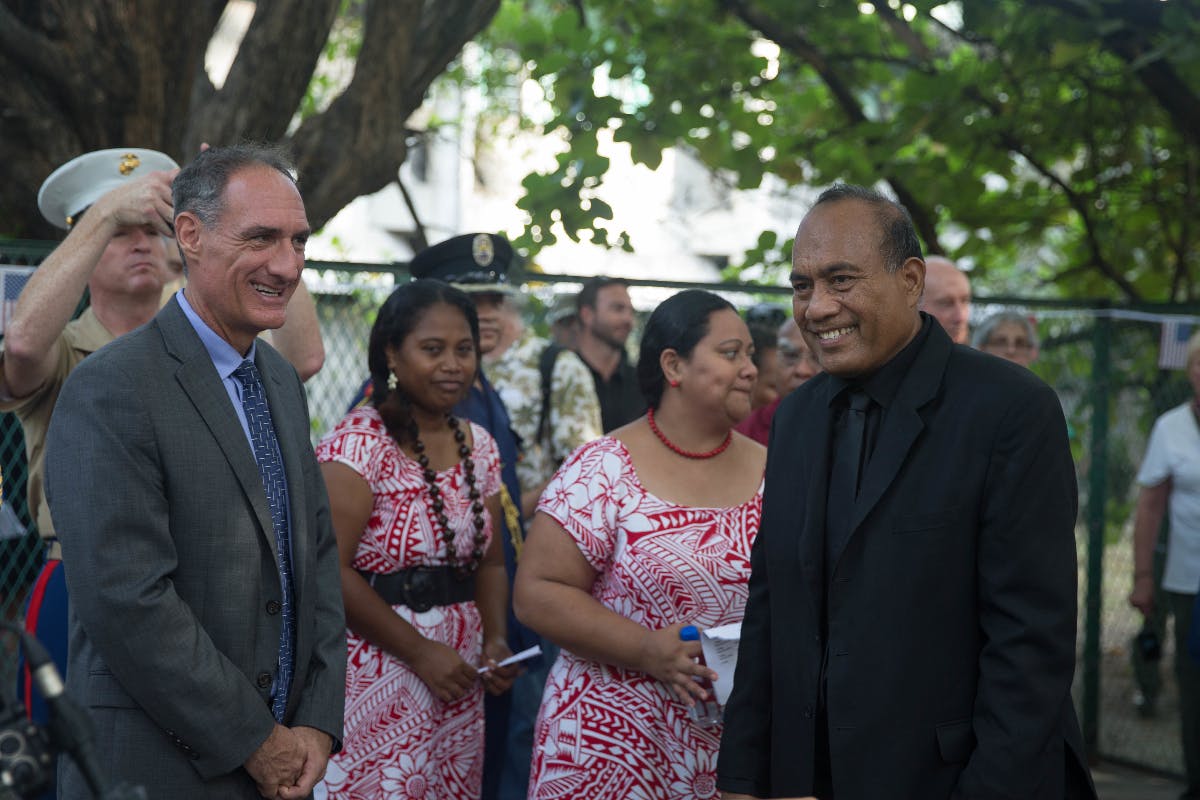How Do You Say ‘Tora, Tora, Tora’ in Chinese?
Communists eye upgrade of airfield on Kiribati, only 1,300 miles south of Honolulu.

At the height of World War II, the United States Navy constructed an airstrip in the Pacific Island nation of Kiribati, roughly 1,300 miles south of Honolulu. Situated on Kiribati’s Canton Island, the airfield served as a vital refueling and staging base for our naval operations in the Pacific theater.
That airstrip could now become property of Communist China, which earlier this month conducted a feasibility study for its upgrade. Kiribati shifted its diplomatic recognition to Communist China from Free China in 2019. Since then, Tarawa and the Chinese Communist Party have been actively engaged in deepening ties in matters of health, infrastructure, and marine transportation.
A once-critical U.S. military installation could then yet become an asset in the hands of the Chinese Communists. What’s more, it could hasten the Chinese Navy’s expansion into the Pacific. For while Beijing maintains that its interests in the airfield are purely commercial, a cursory glance at Kiribati’s neighbors suggests otherwise – the recently inked security deal between the CCP and the Solomon Islands is a case in point.
Throughout the Pacific, the People’s Liberation Army Navy is rapidly expanding its reach. In the South China Sea, it has ostensibly militarized all seven of its artificial islands. In the East China Sea, it has become more assertive in its territorial claims. Under the pretense of fishing, the CCP has taken to encroaching on sovereign waters – a matter of especial gravity for Pacific Island nations with large exclusive economic zones.
All of this aims at Beijing’s stated vision of a new international order with it at the center. It is a vision that Xi Jinping and the CCP take most seriously and to which they have continued to commit considerable financial and manpower resources.
At the annual “two sessions” meeting this month, President Xi pressed his generals to “dare to fight.” His government also announced a 7.2 percent increase in China’s defense budget – which has doubled over the last decade. In the meantime, President Biden’s proposed defense budget for fiscal 2024 is a mere 3.2 percent increase over last year. With inflation at six percent, that would actually mean a decline in U.S. military buying power.
In recent months Beijing has unveiled new military readiness laws, new air-raid shelters, and new mobilization efforts – among them a plan to recruit junior high school graduates as naval aircraft pilots.
The people’s war, it seems, is everyone’s war. Mr. Xi’s gambits also seem to suggest he believes it could be a protracted one.
Yet it needn’t be – especially if America’s Navy keeps to its current course. For while the CCP is busy shoring up strategic assets and readying for ostensible military conflict, the United States Navy appears to be readying to battle the weather.
“As the Secretary of the Navy, I can tell you that I have made the climate one of my top priorities,” said Secretary of the Navy Carlos Del Toro this month soon after admitting China’s naval superiority. “This is an all-hands-on-deck moment,” he added.
The U.S. Navy currently spends $718 million on combating climate change – equivalent to more than 10 percent of the $6.2 billion in maintenance costs for 151 Navy vessels. It has committed to a 65 percent reduction in greenhouse gas emissions by 2030 and net-zero emissions by 2050.
Under the Biden Administration’s 2024 military budget, 11 naval ships would be decommissioned and nine built, for a net loss of two ships. The budget makes no request for funds for amphibious warfare vessels, meaning the Navy could fall below its requirement to maintain a 31-ship amphibious warfare fleet.
While the PLA Navy is expected to boast 400 ships by 2025, America presently trails with less than 300. President Biden’s defense plan has set as a target 350 manned vessels by 2045 – by that time America might well have lost, with the airstrip in Kiribati long militarized and the CCP on our doorstep.
And this, Mr. Del Toro, is the real “all-hands-on-deck-moment.”

